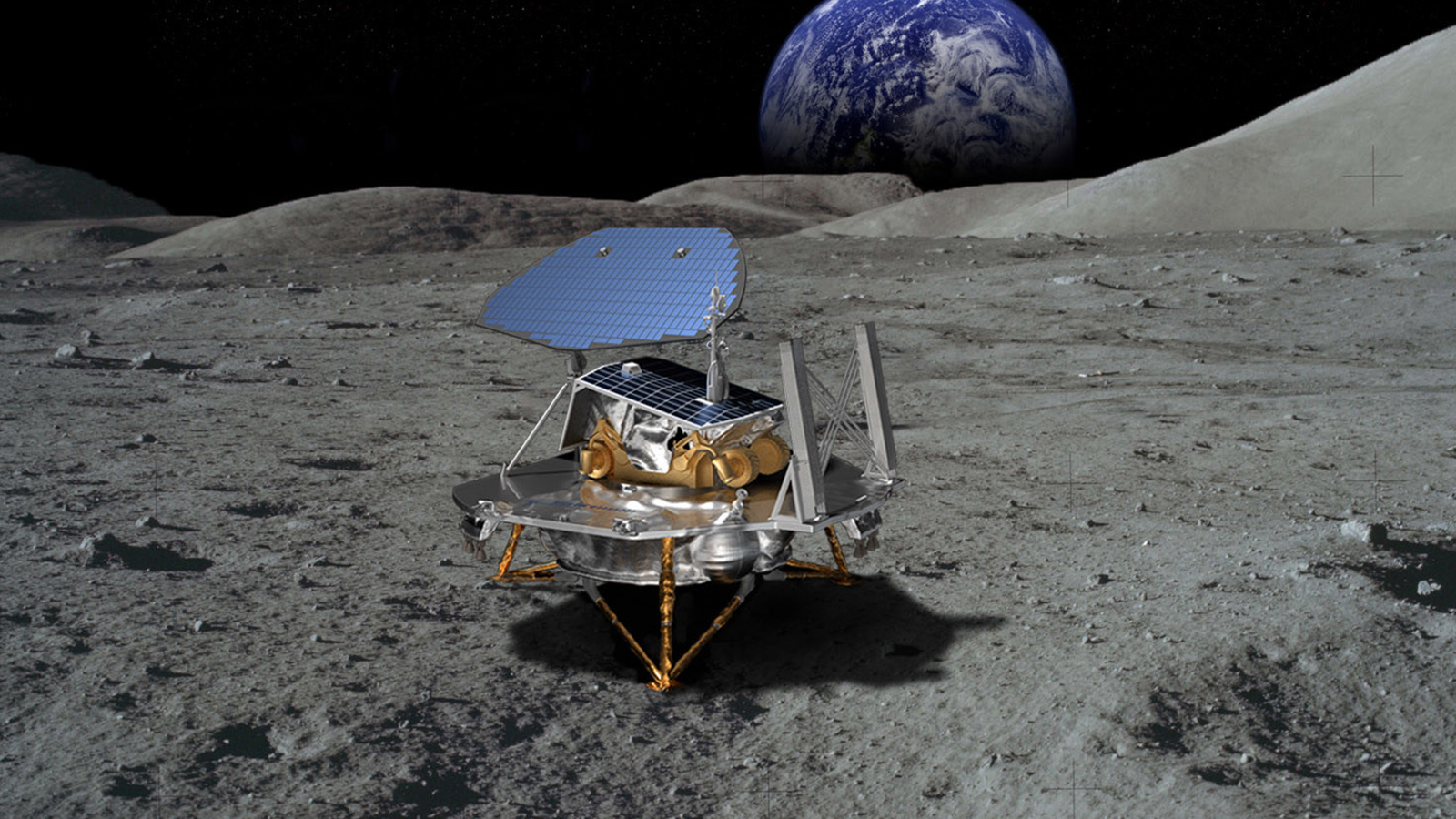Stay Up to Date
Submit your email address to receive the latest industry and Aerospace America news.
NASA has selected nine companies to help the agency boost the fledgling moon exploration industry under a new program called Commercial Lunar Payload Services, or CLPS (pronounced “clips”).
The agency announced the companies Thursday in a ceremony at NASA headquarters in Washington, D.C. Each will be eligible to compete for NASA funds to land small, inexpensive research instruments on the moon that would help pave the way for larger landers, including those carrying people.
CLPS signals a new way of doing business for NASA, which has more typically invited teams of university or government scientists to suggest robotic missions whose hardware the agency would build in house or more often hire others to build.
“NASA is not going to be purchasing, owning and operating its own systems to get small payloads to the surface of the moon,” NASA Administrator Jim Bridenstine told reporters at NASA headquarters. “Instead, we’re going to buy the service. That enables us to be one customer of many customers, spreading the cost. That also enables us to have multiple providers that are competing on cost and innovation.”
NASA plans to begin soliciting bids for specific CLPS missions in the coming months and begin flying payloads as early as 2019.
The nine “commercial partners,” as NASA calls them, are: Astrobotic Technology of Pittsburgh; Deep Space Systems of Littleton, Colo.; Draper of Cambridge, Mass.; Firefly Aerospace of Cedar Park, Texas; Intuitive Machines of Houston; Lockheed Martin Space of Littleton, Colo.; Masten Space Systems of Mojave, Calif.; Moon Express of Cape Canaveral, Fla.; and Orbit Beyond of Edison, N.J.
Several of the companies issued press releases touting their lander concepts. Lockheed Martin said its McCandless Lunar Lander, named after a longtime employee and space pioneer, would be based on the InSight lander, which touched down Monday on Mars to explore the red planet’s interior. Astrobotic said its Peregrine Lunar Lander would be able to deliver up to 265 kilograms on each mission.
The lander companies will be responsible for securing their own launch providers.
“We don’t want to necessarily be in the business of marrying them up with a rocket launch,” Bridenstine said. “We want them to go find their own rocket launch and tell us what the price is.”
NASA aims to deliver about two payloads a year and spend up to $2.6 billion over the 10-year life of the program.
NASA officials said they want CLPS to move quickly and are willing to accept the possibility that some companies might fail.
“This is like a venture capital kind of effort,” Bridenstine explained. “The risk is high, but the return is also very high for a low investment.”
Thomas Zurbuchen, associate administrator for NASA’s Science Mission Directorate, which will lead CLPS, said NASA has some potential payloads on hand. Others will result from an October request for proposals that calls for bids to be submitted in January.
Potential payloads could study gravity or radiation, probe for water ice or test communication and power systems.
NASA said it could add more companies to the program if new lunar landers emerge.
While CLPS could eventually lead to a similar effort for Mars, NASA wants to focus on the moon for now.
“We’re going to look carefully at the success of this one and then go from there,” Zurbuchen told reporters. “The moon is where it’s at right now relative to commercial space.”
At the top of the page: An illustration of Draper’s uncrewed lander called Artemis-7.
About Mark Selinger
A former congressional reporter and Pentagon correspondent, Marc has written for more than 20 aerospace and defense publications.
Related Posts
Stay Up to Date
Submit your email address to receive the latest industry and Aerospace America news.





